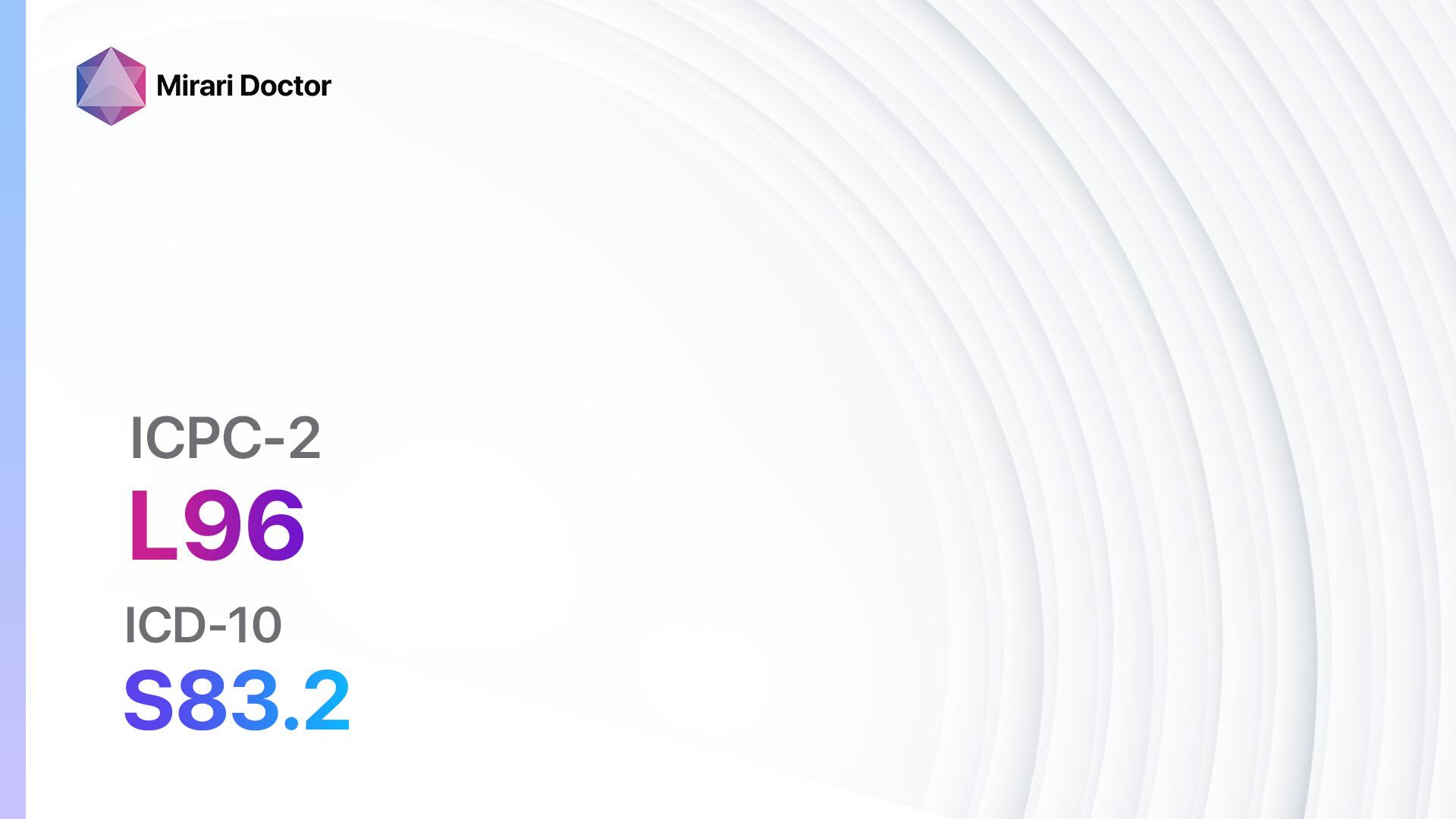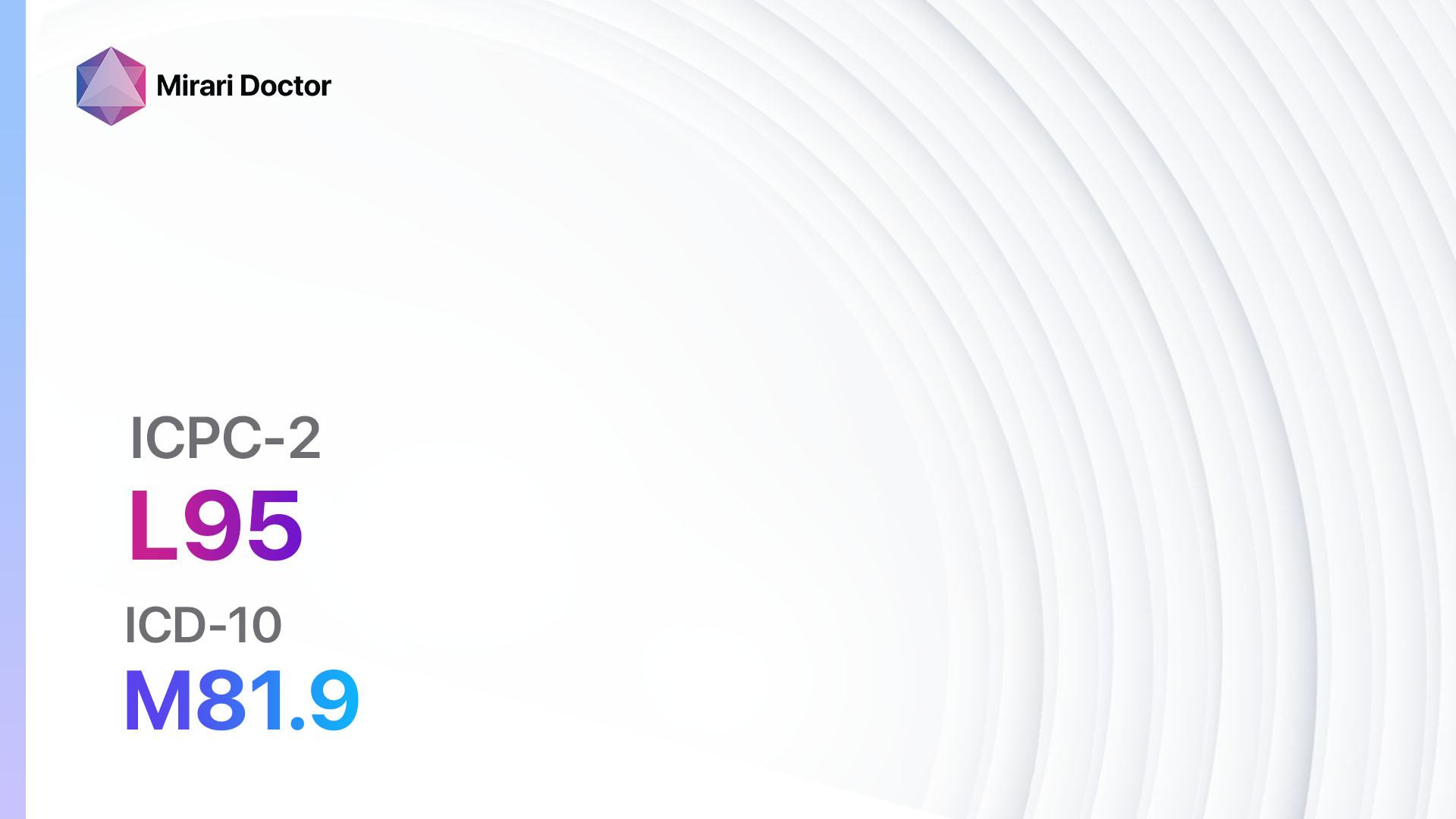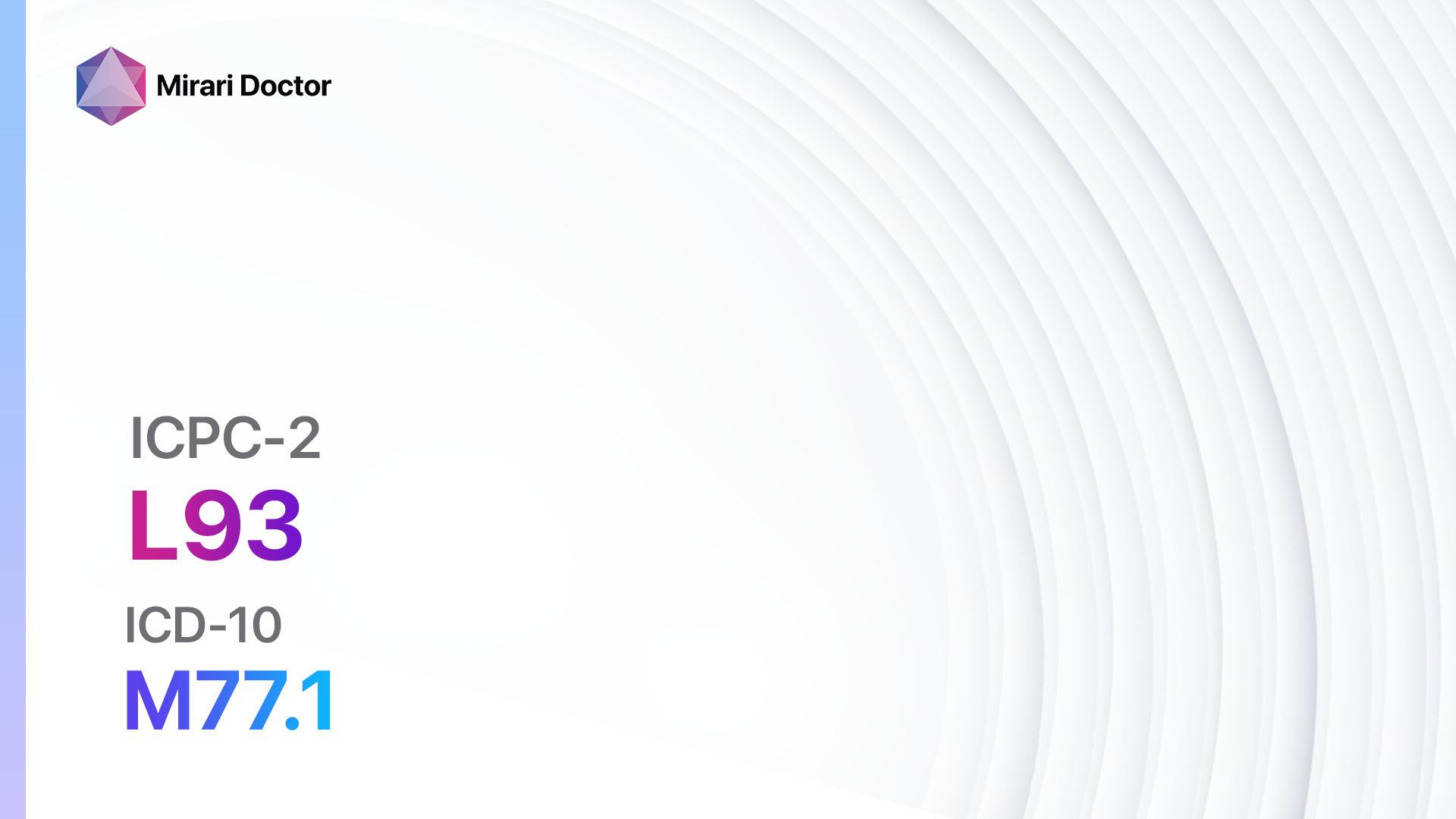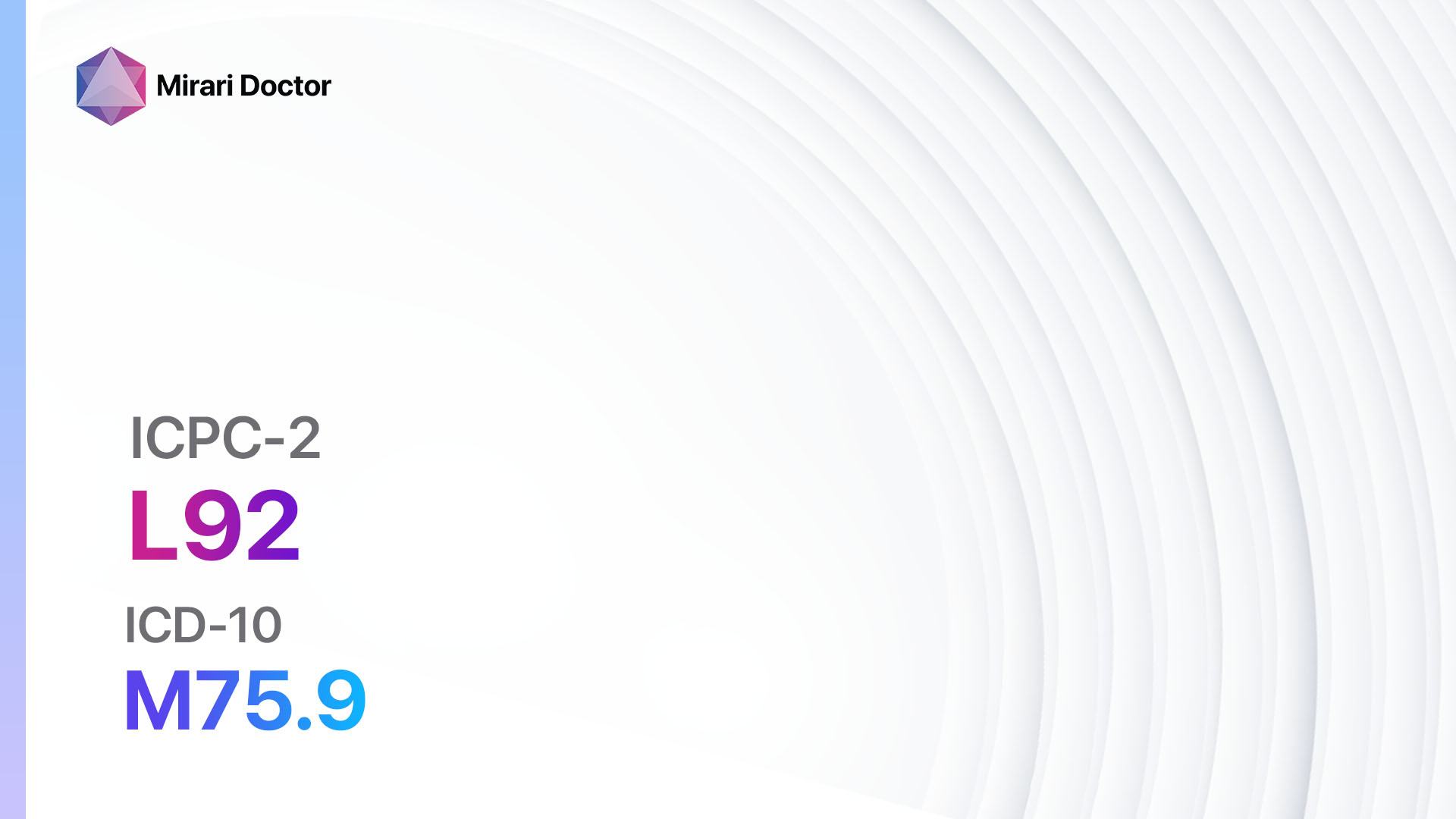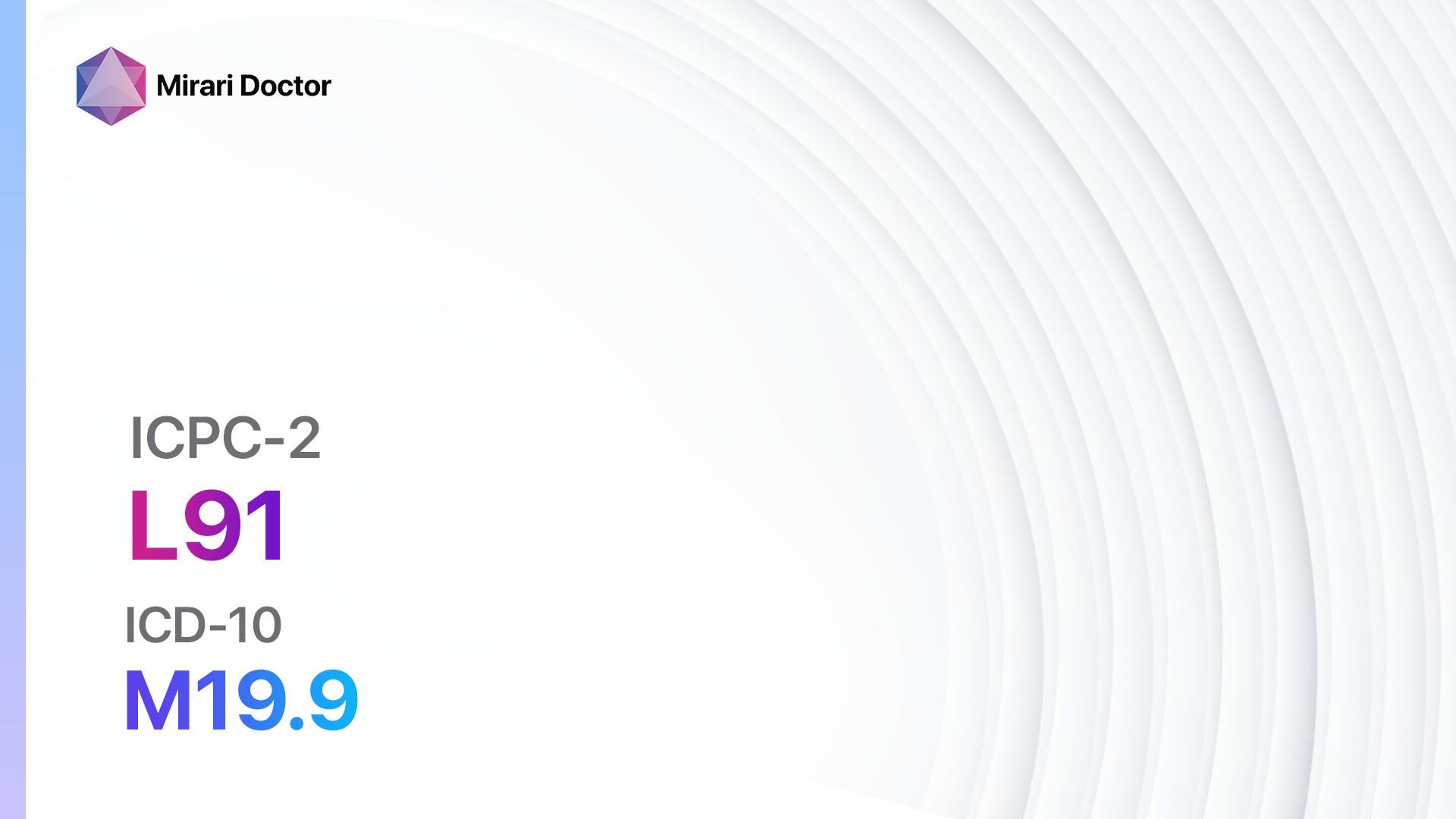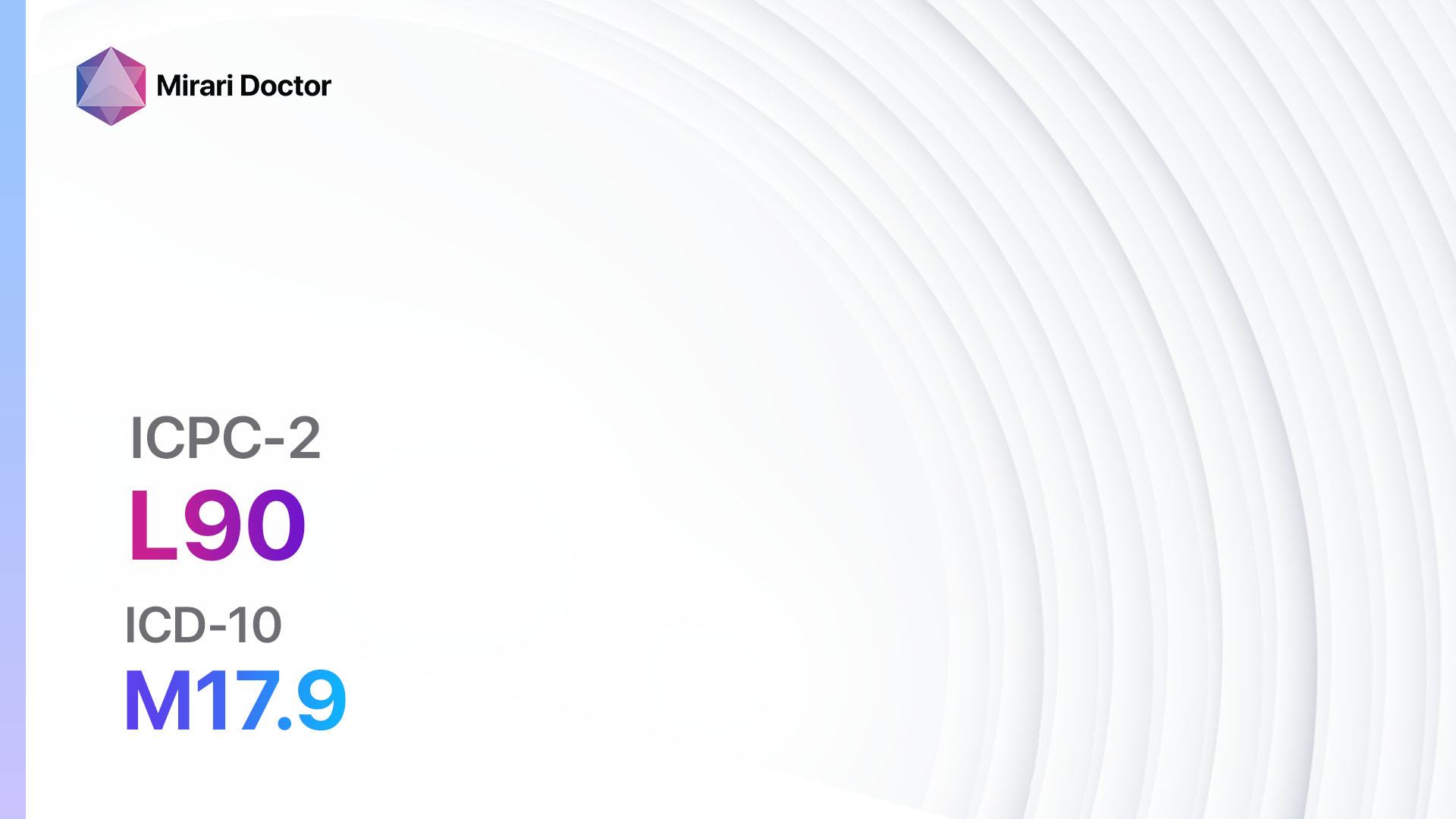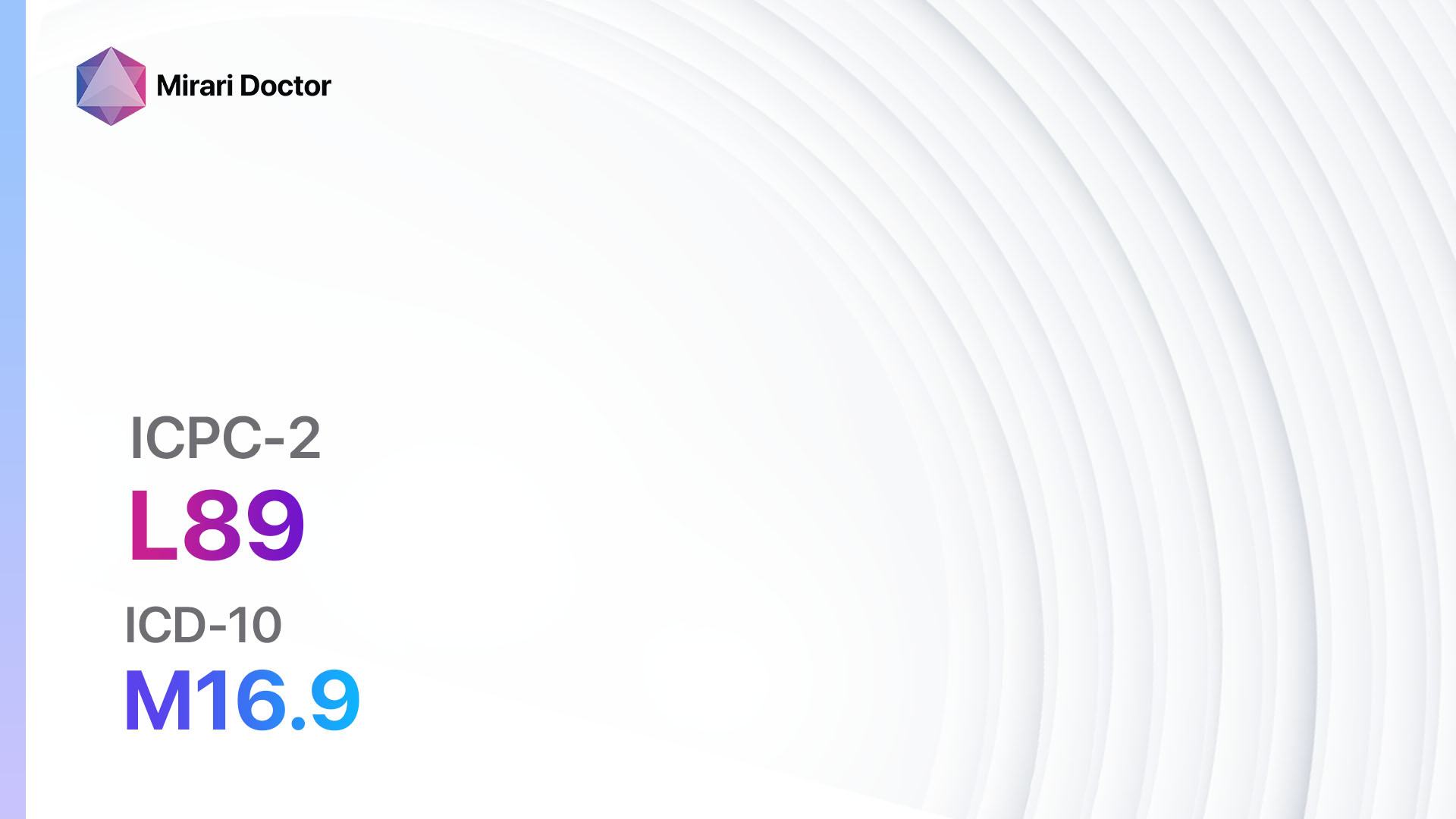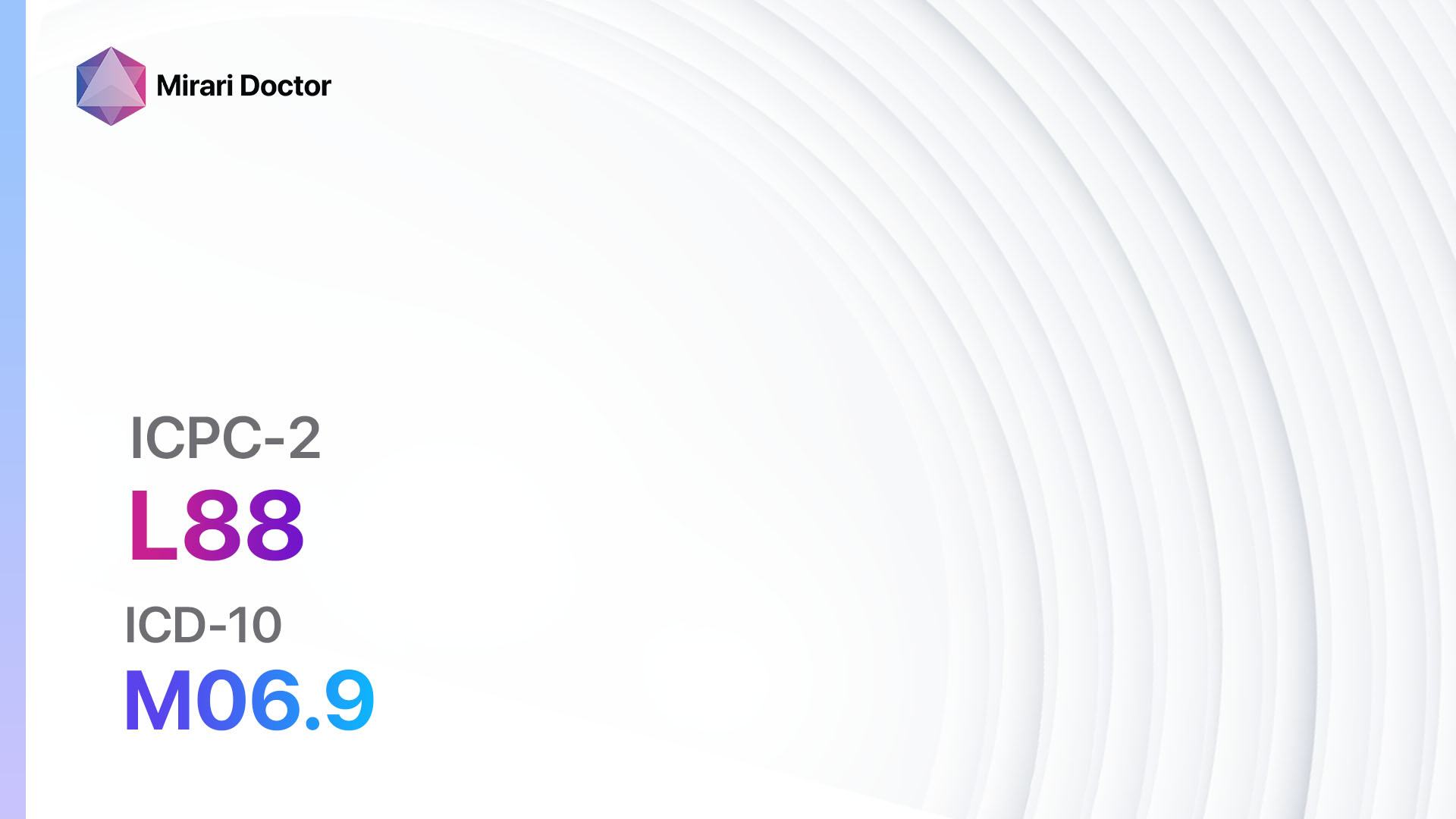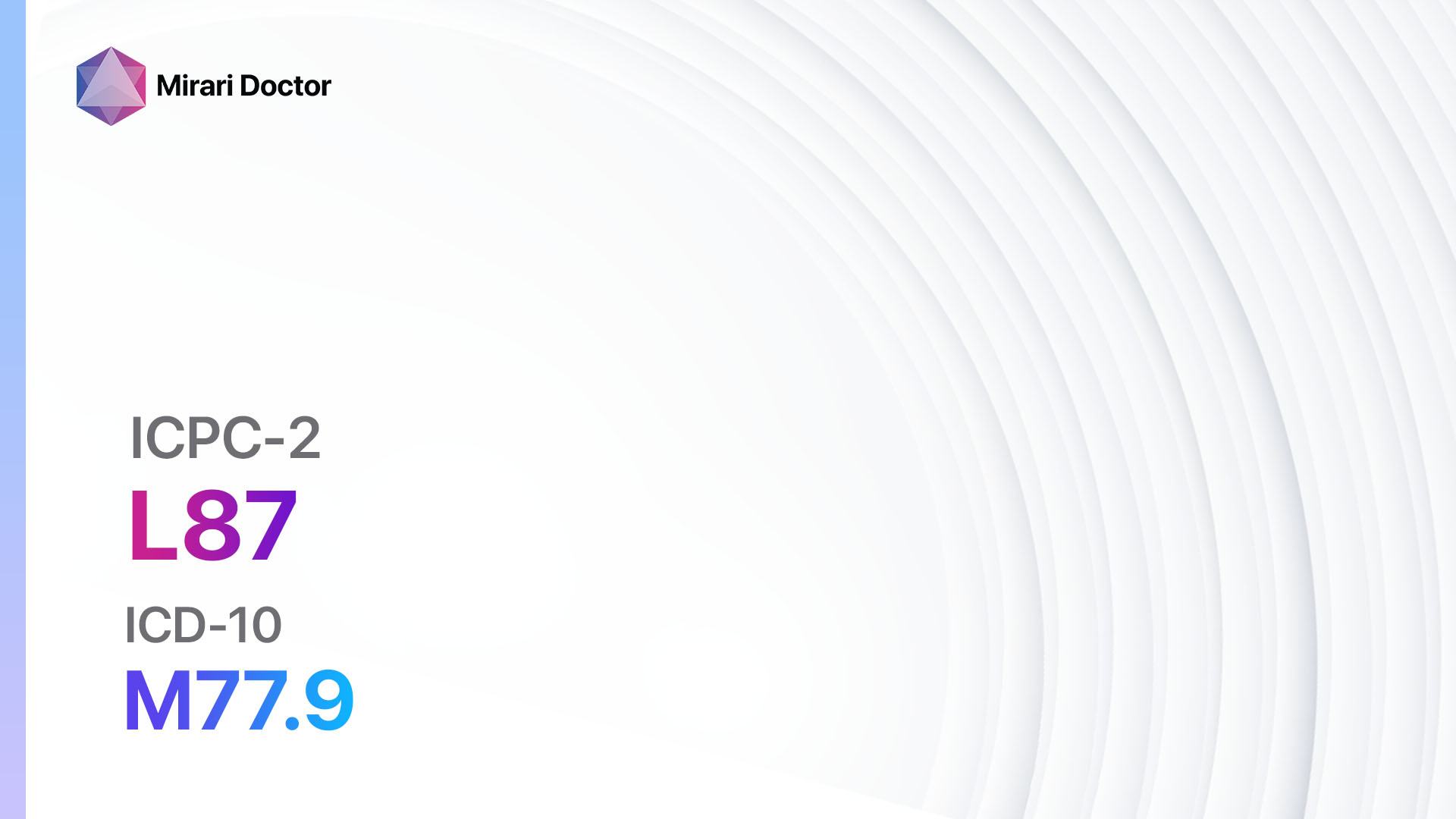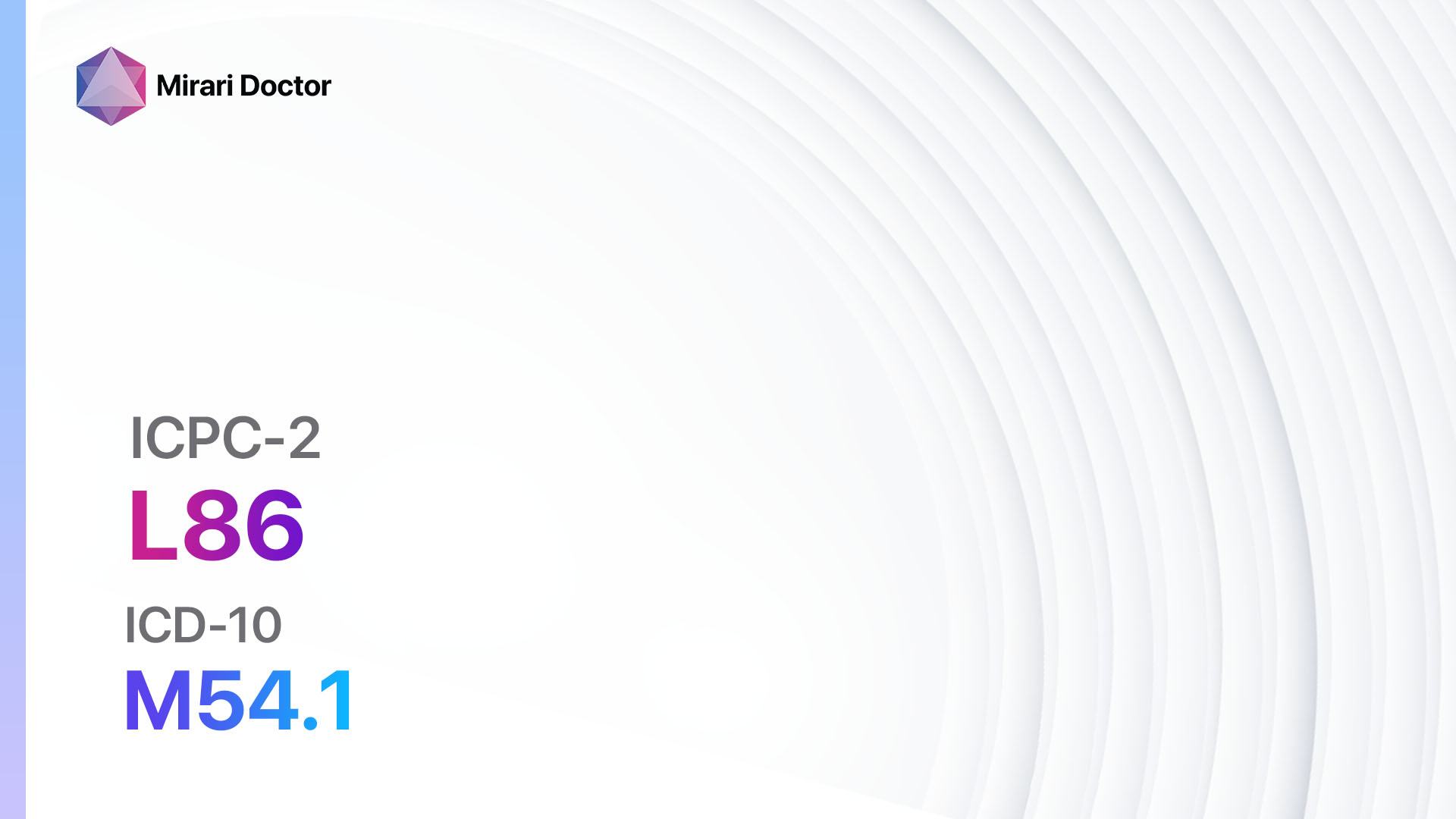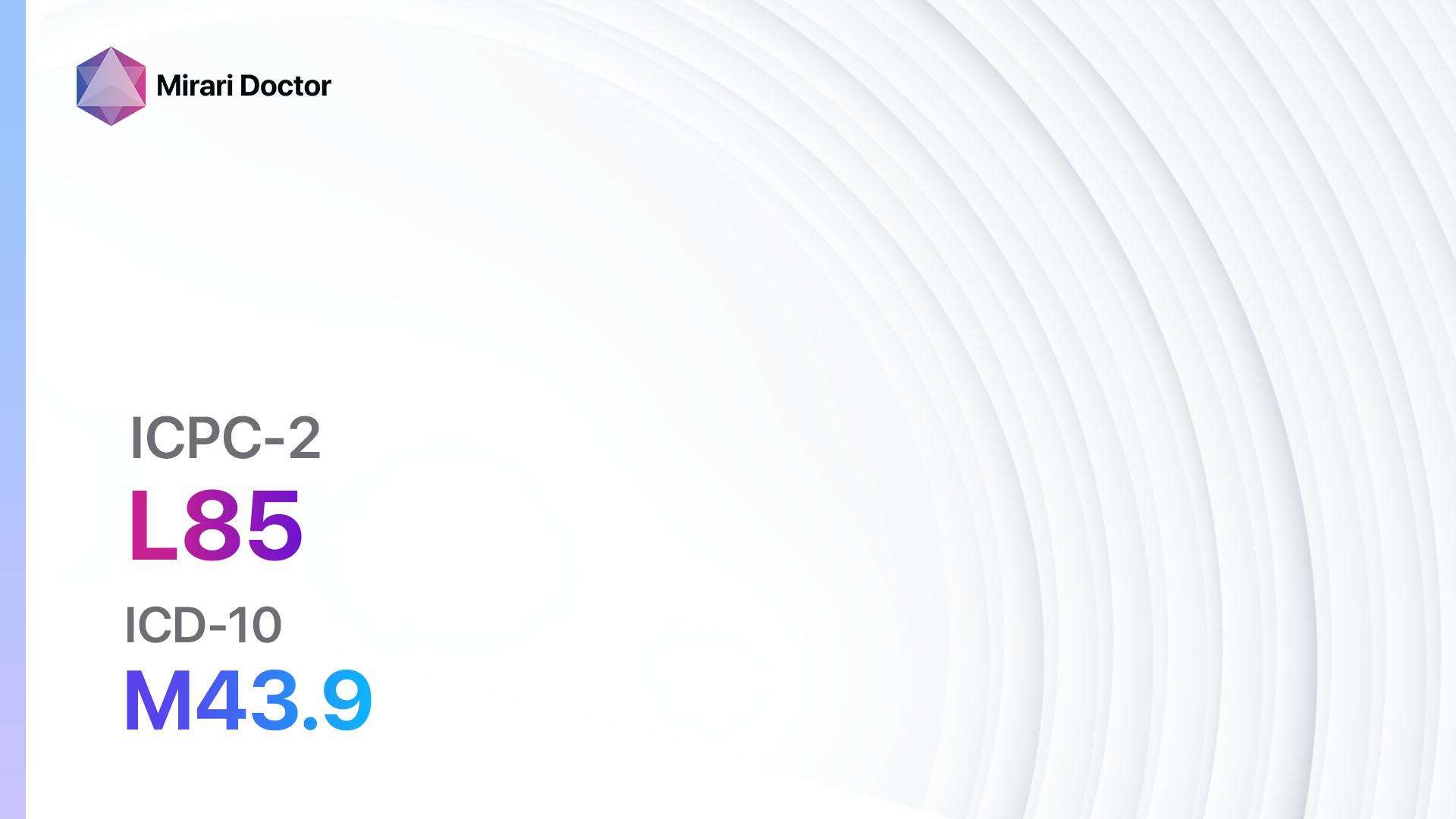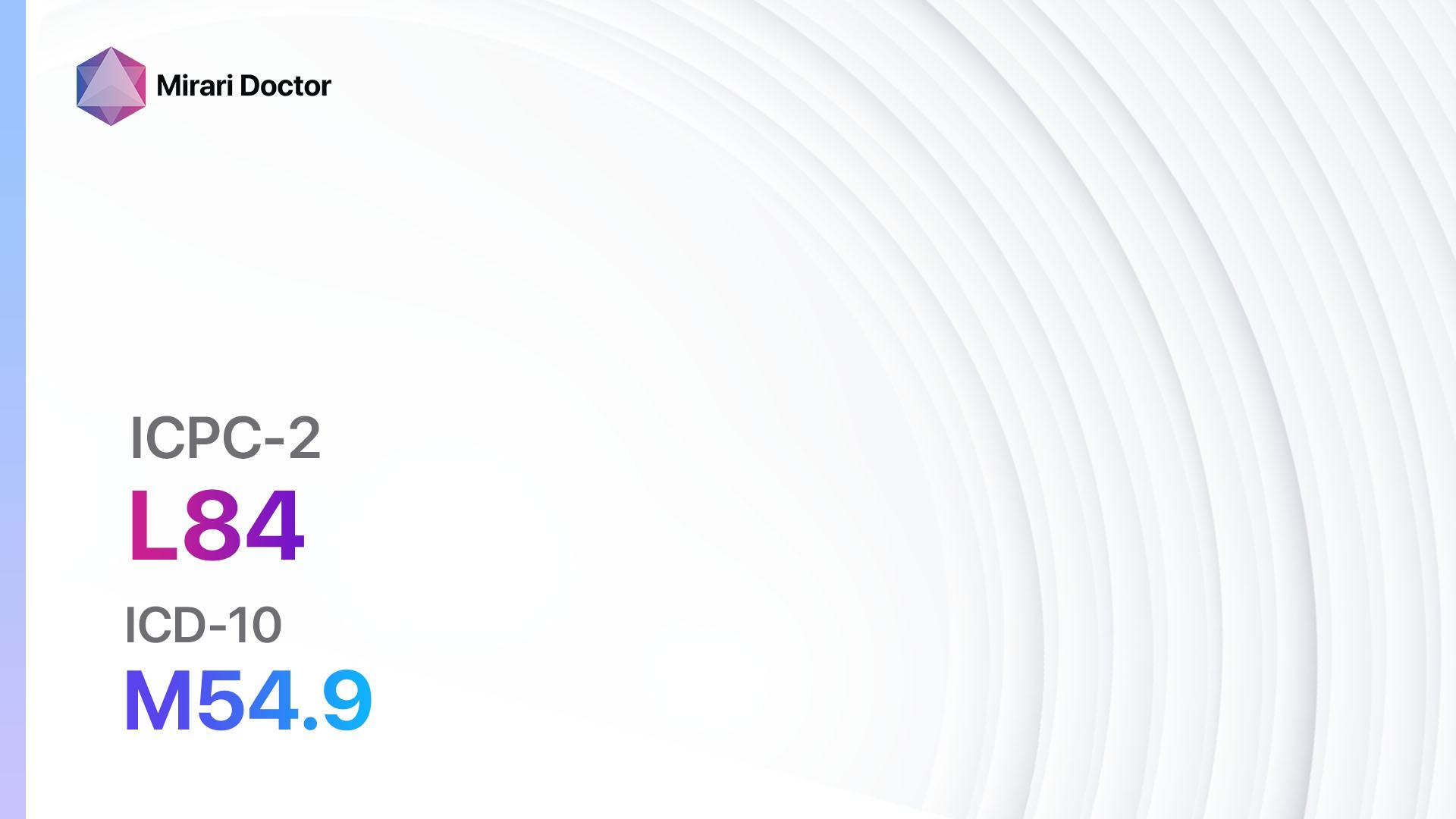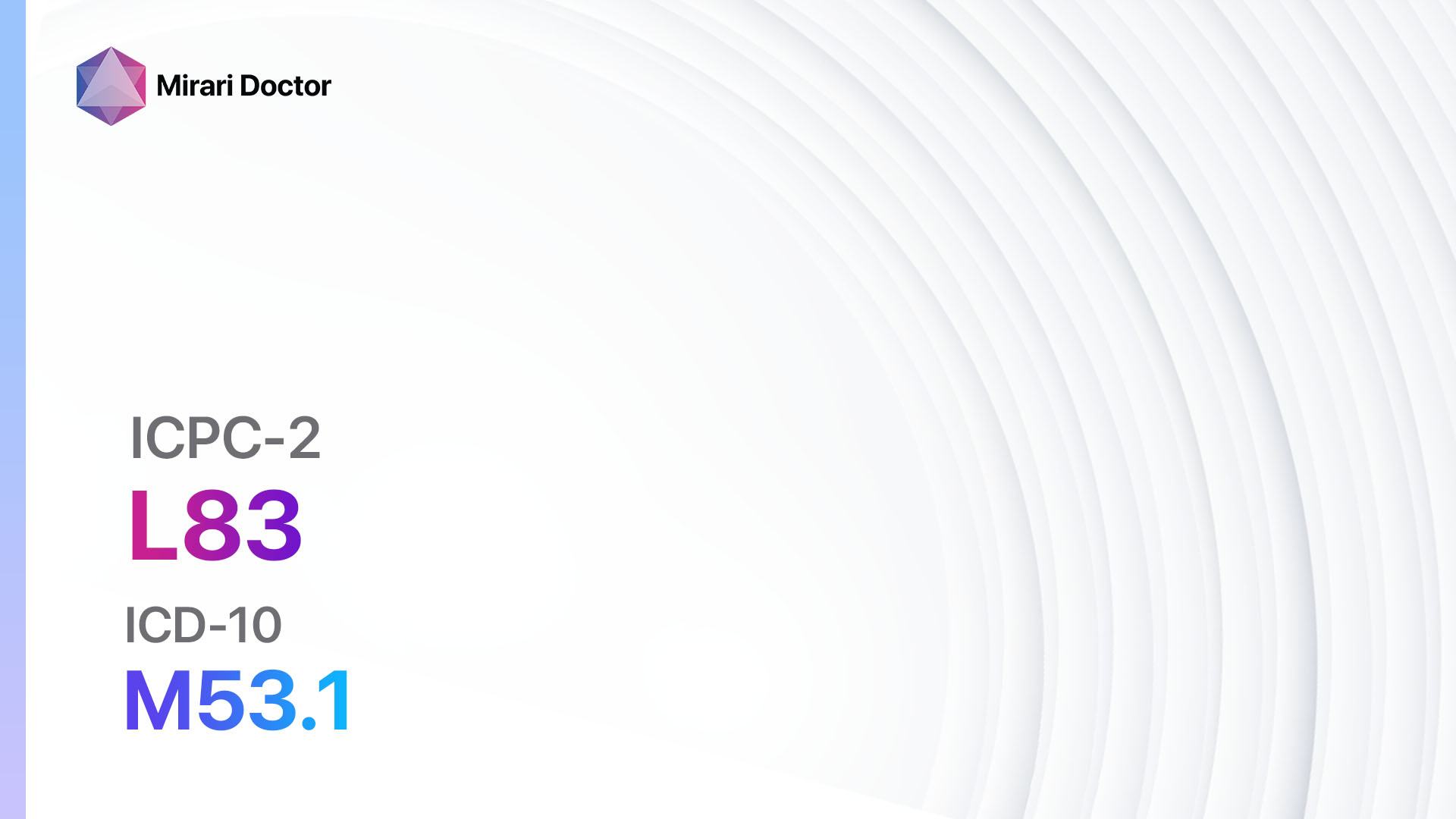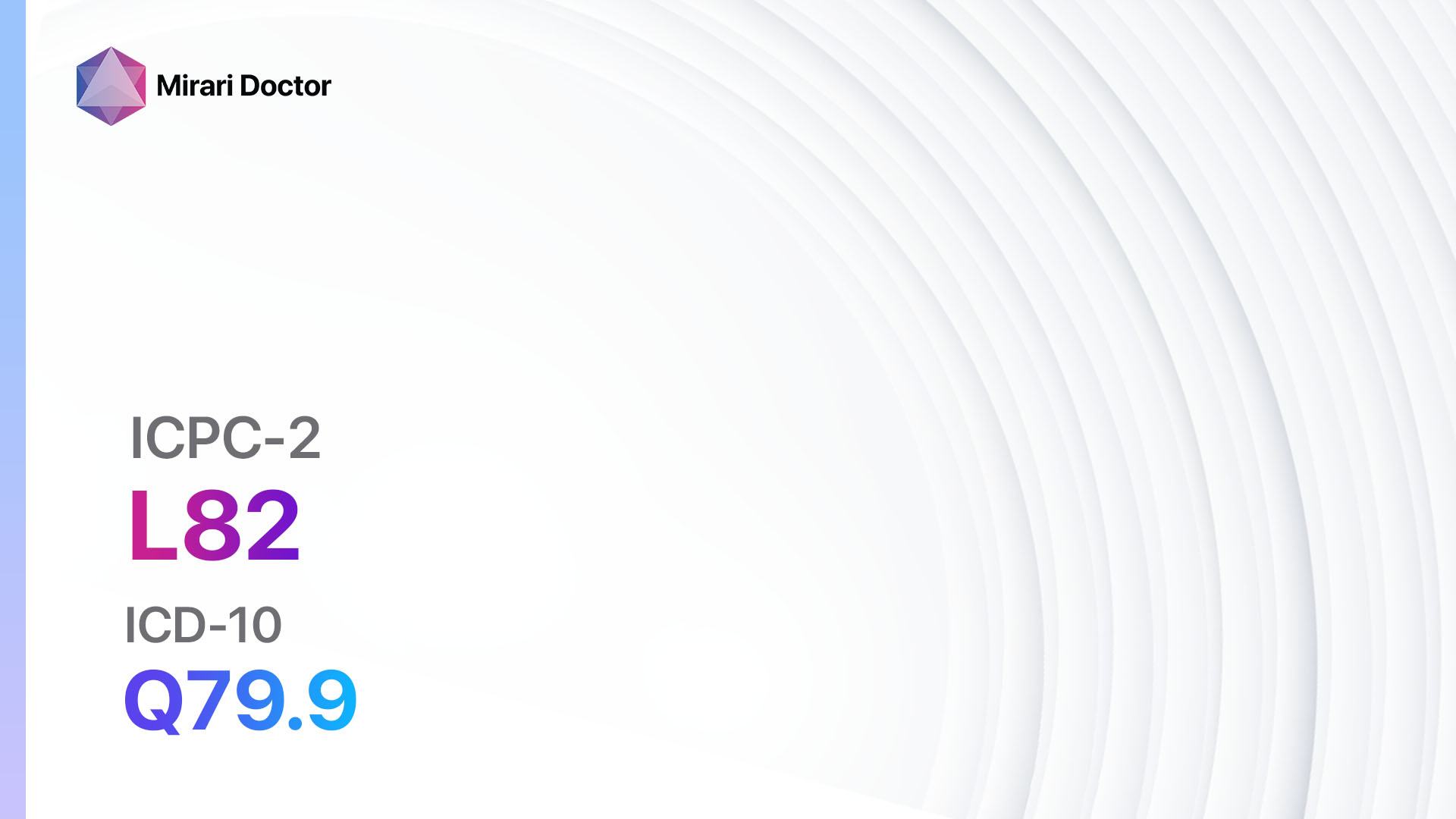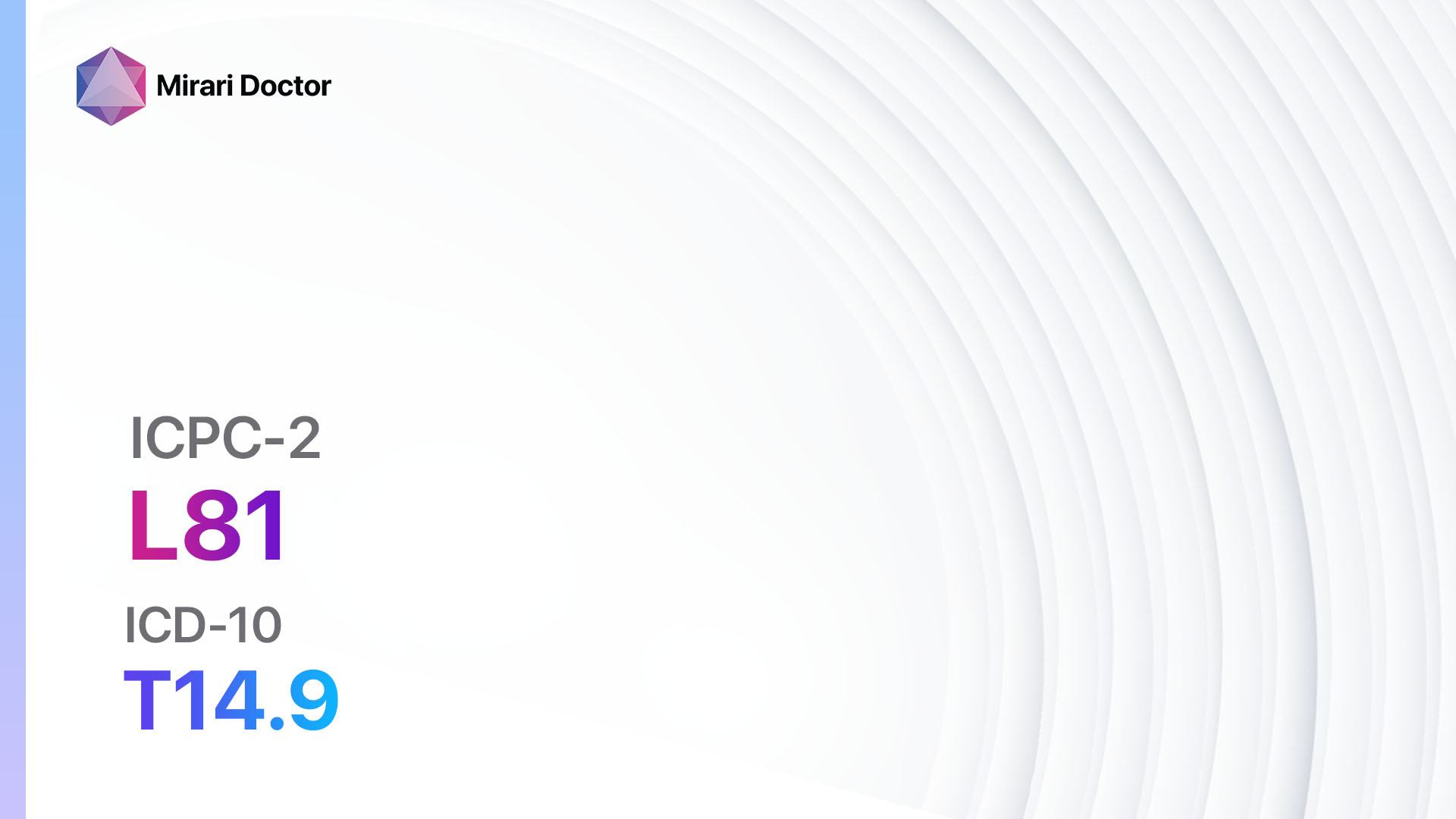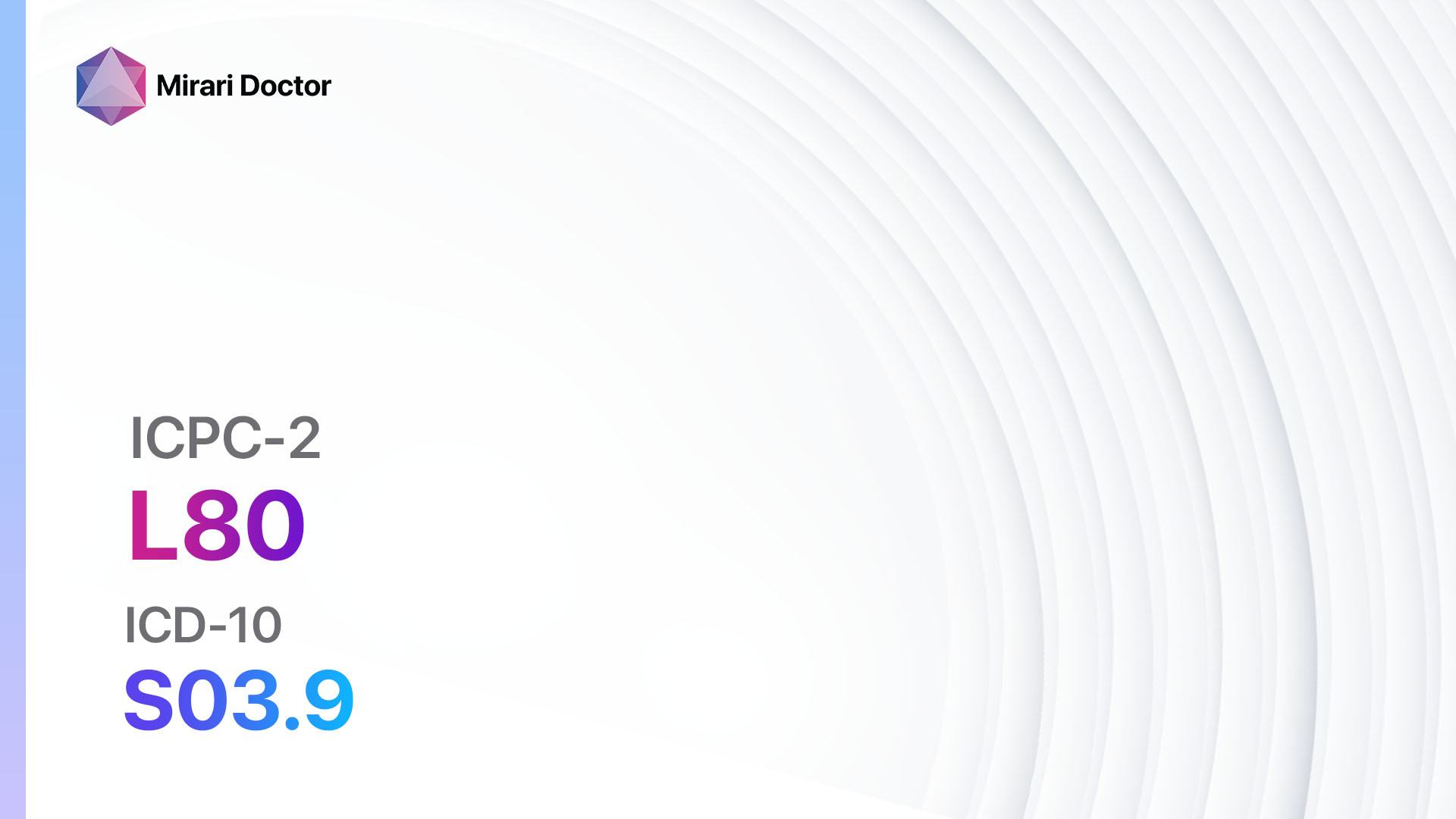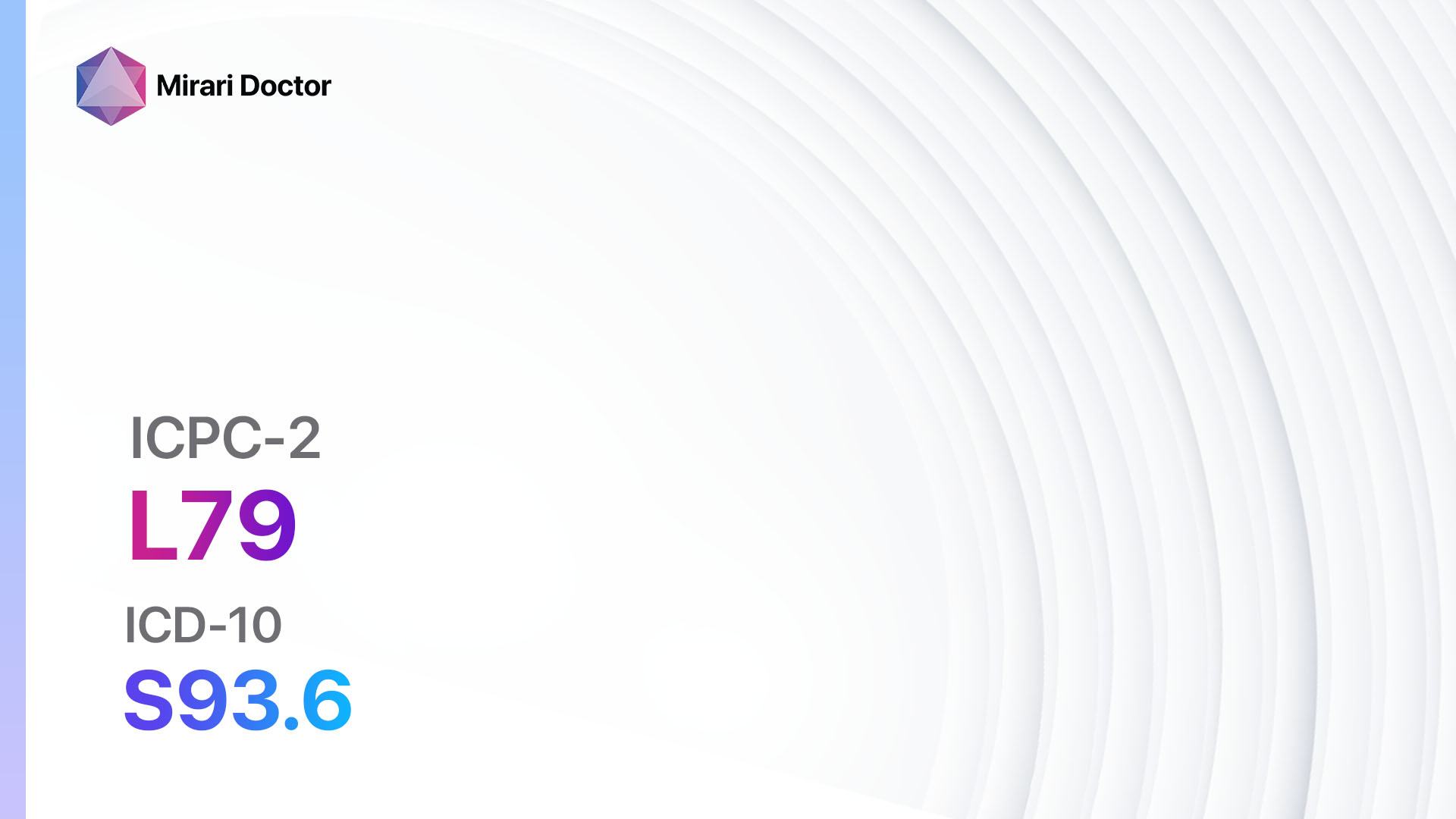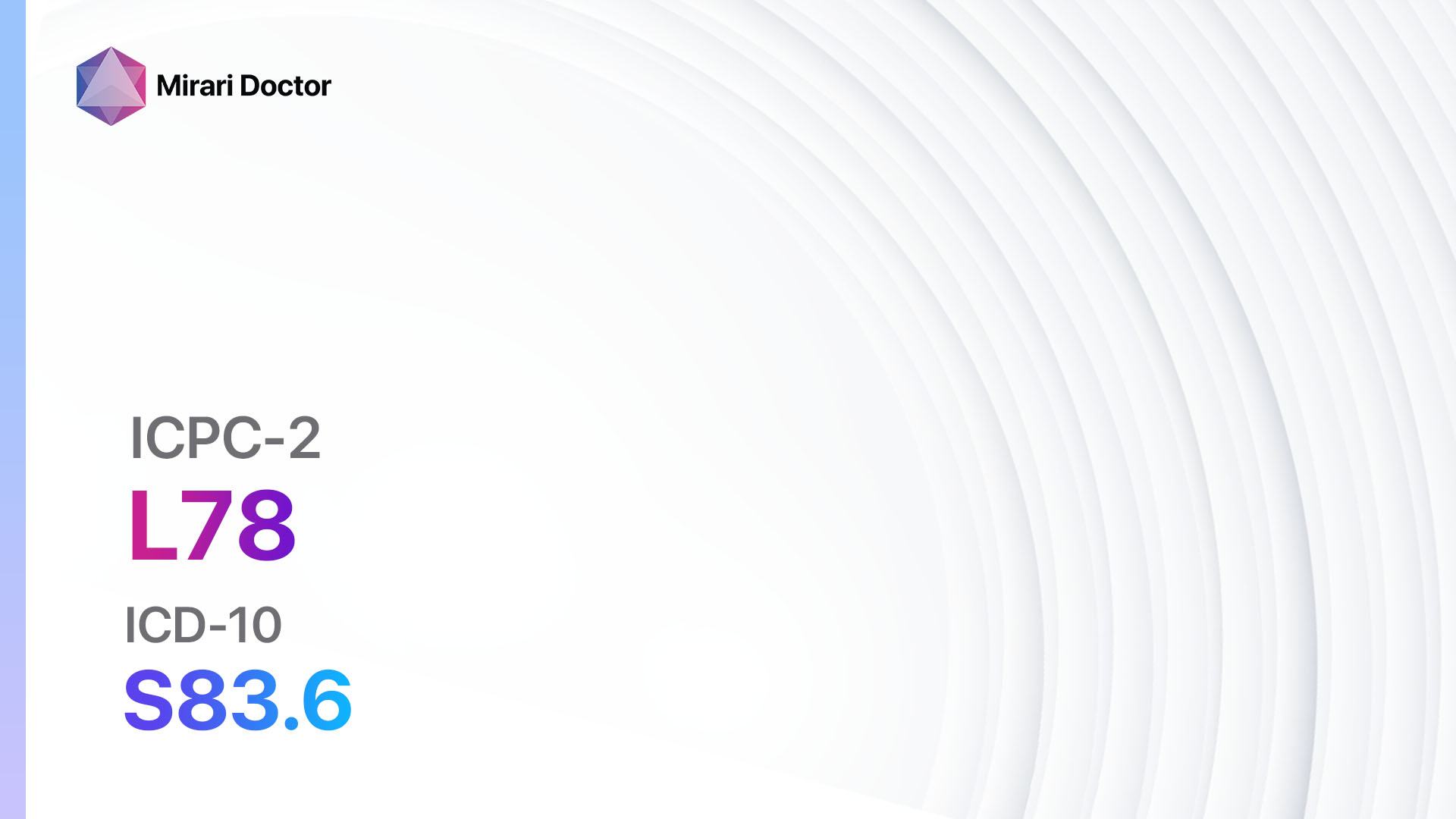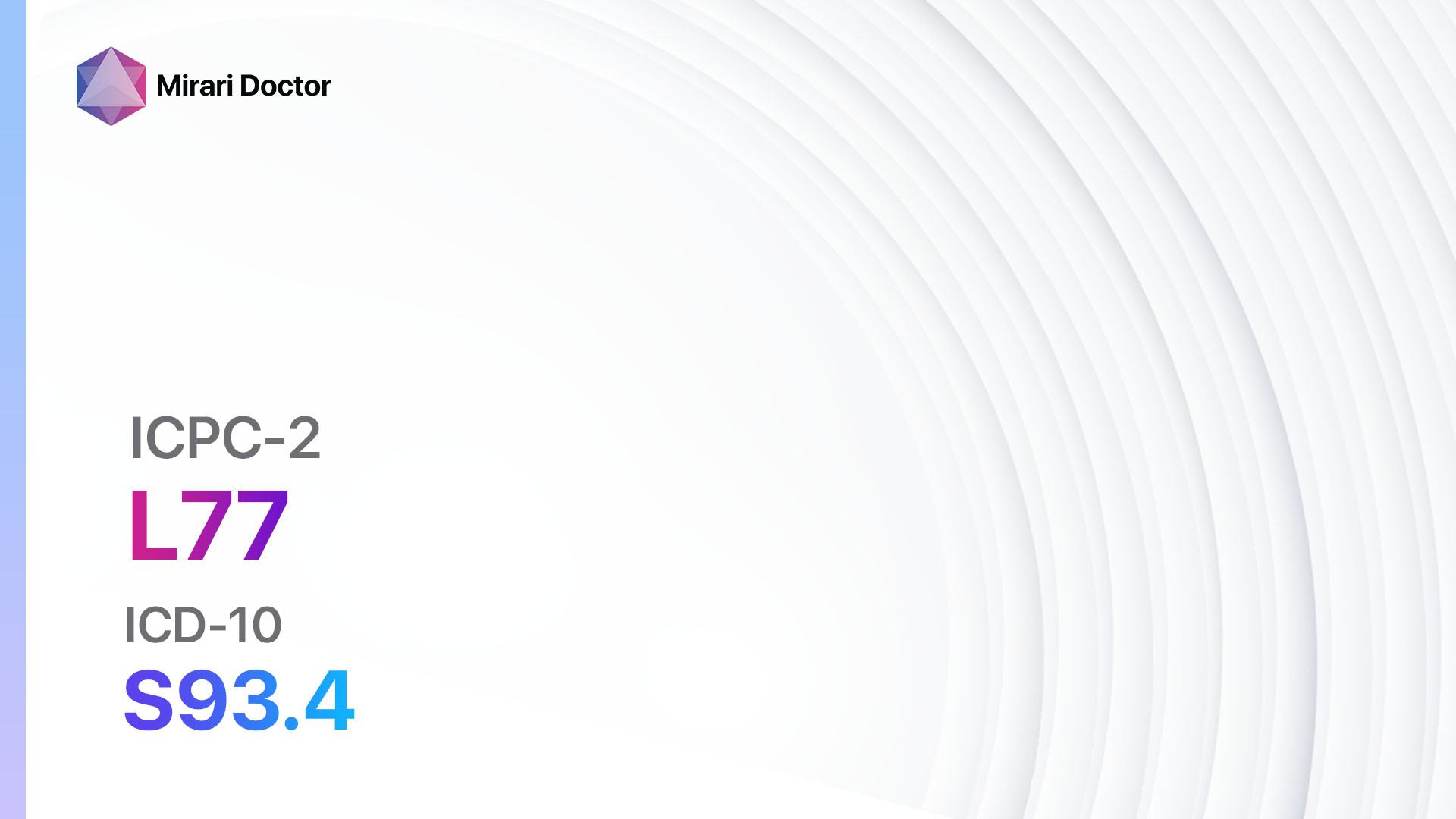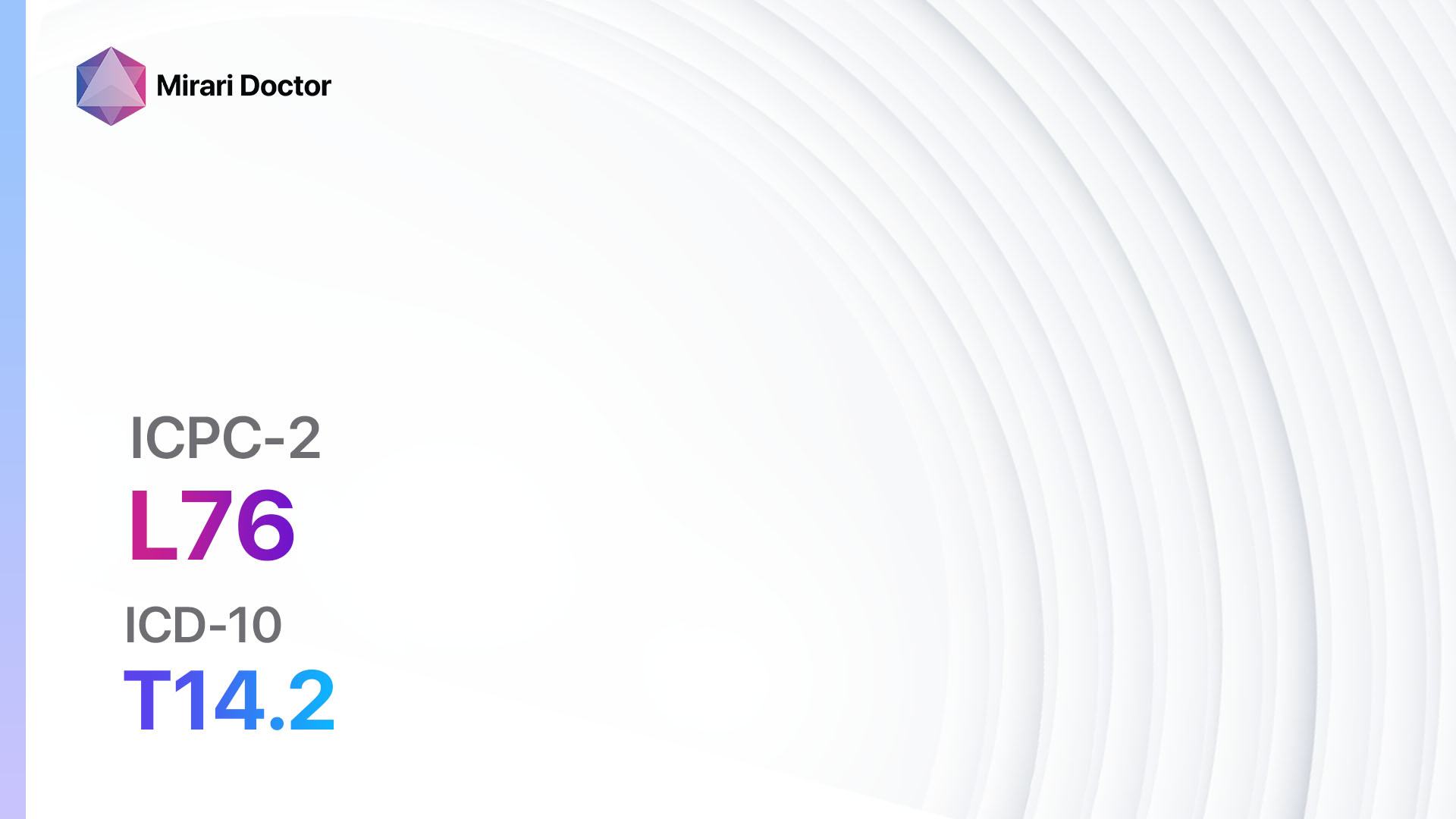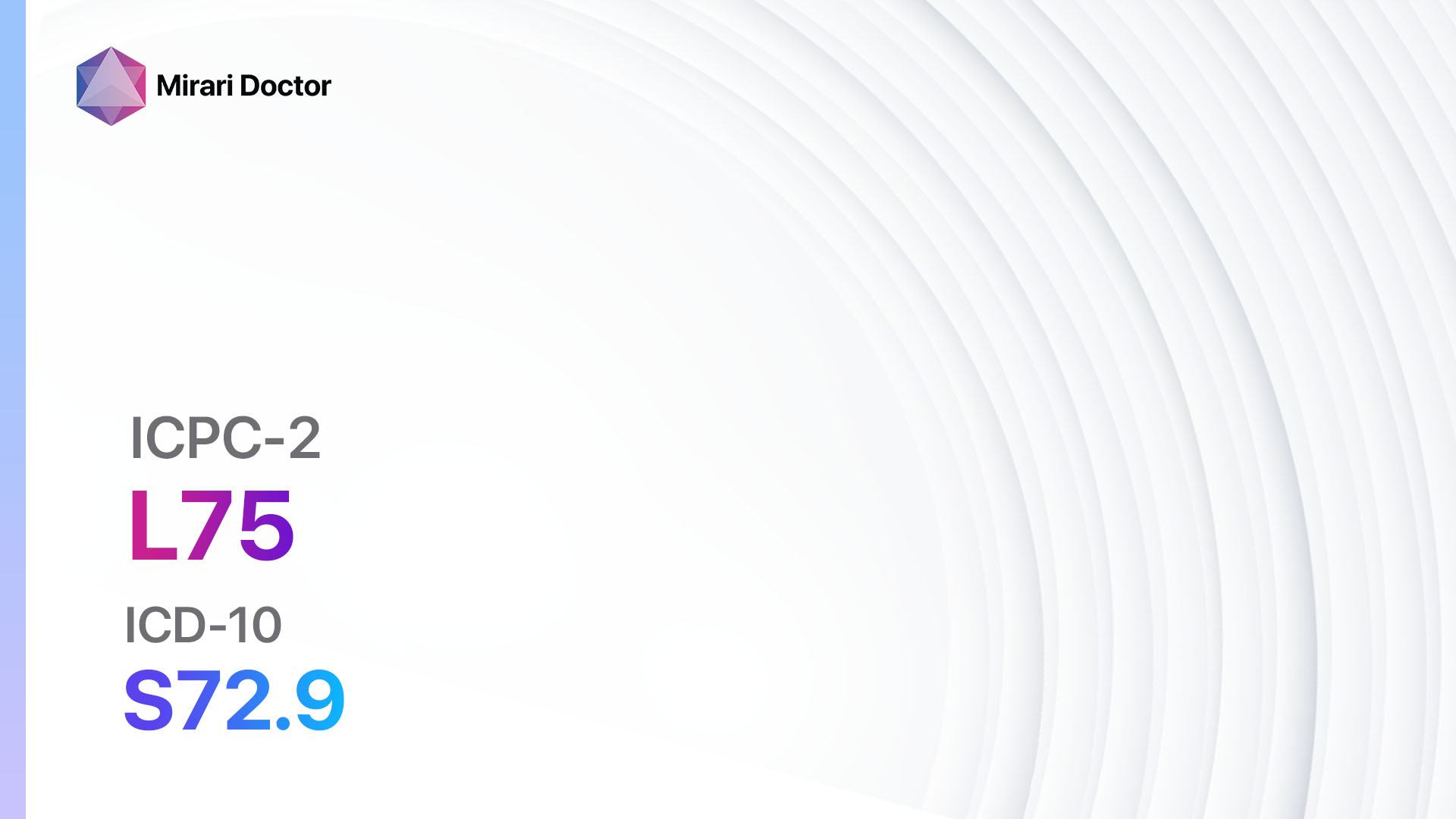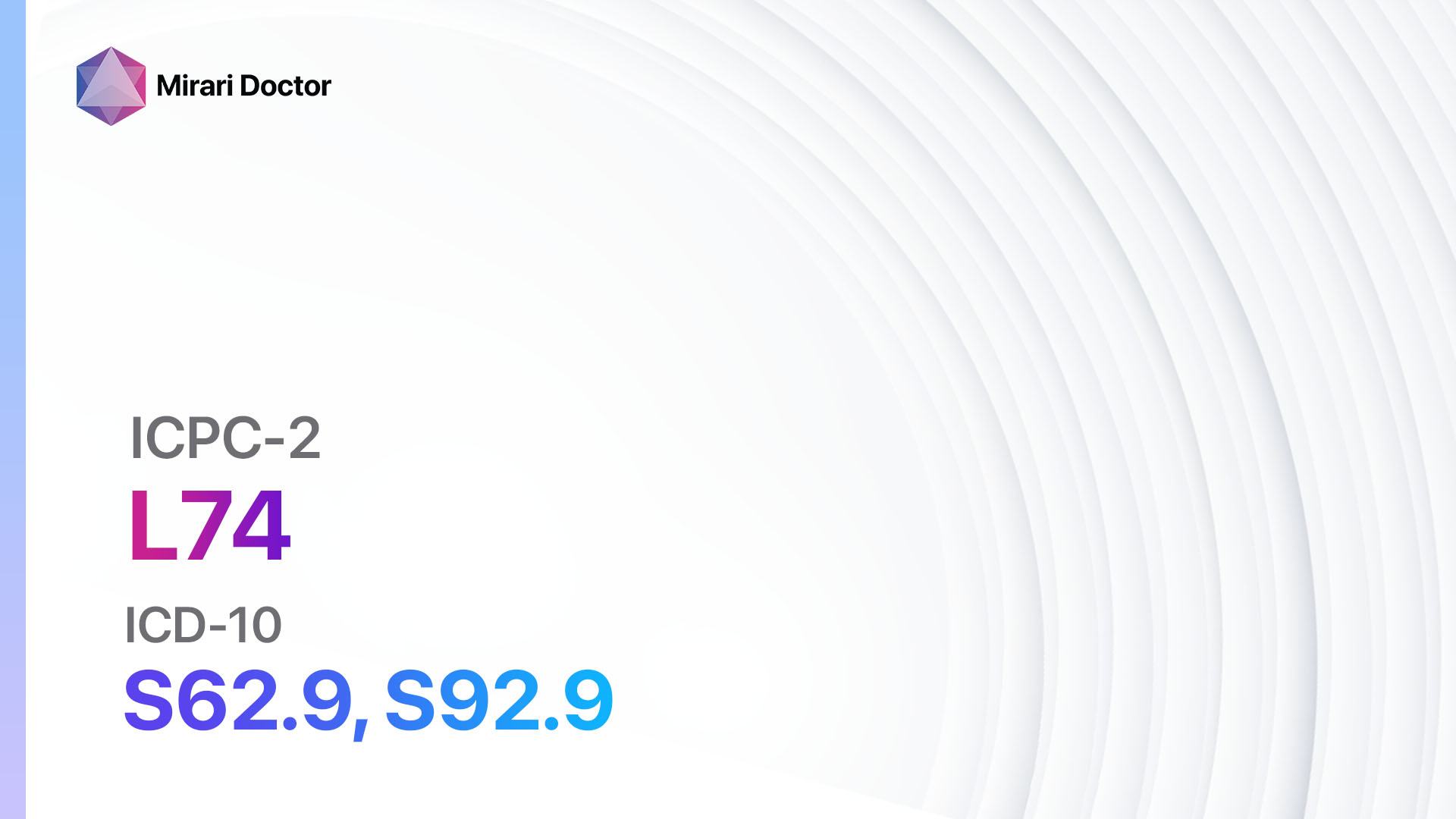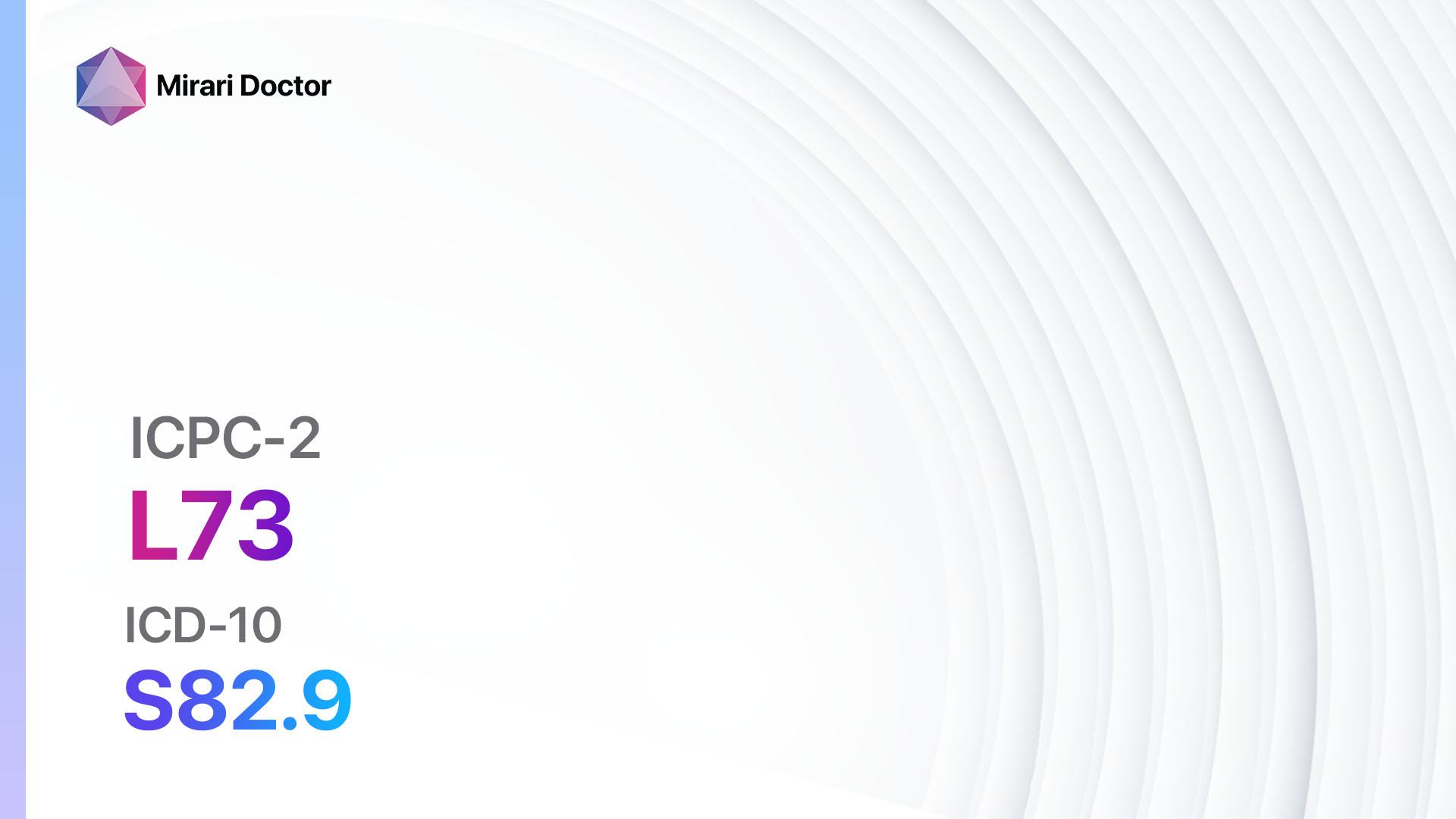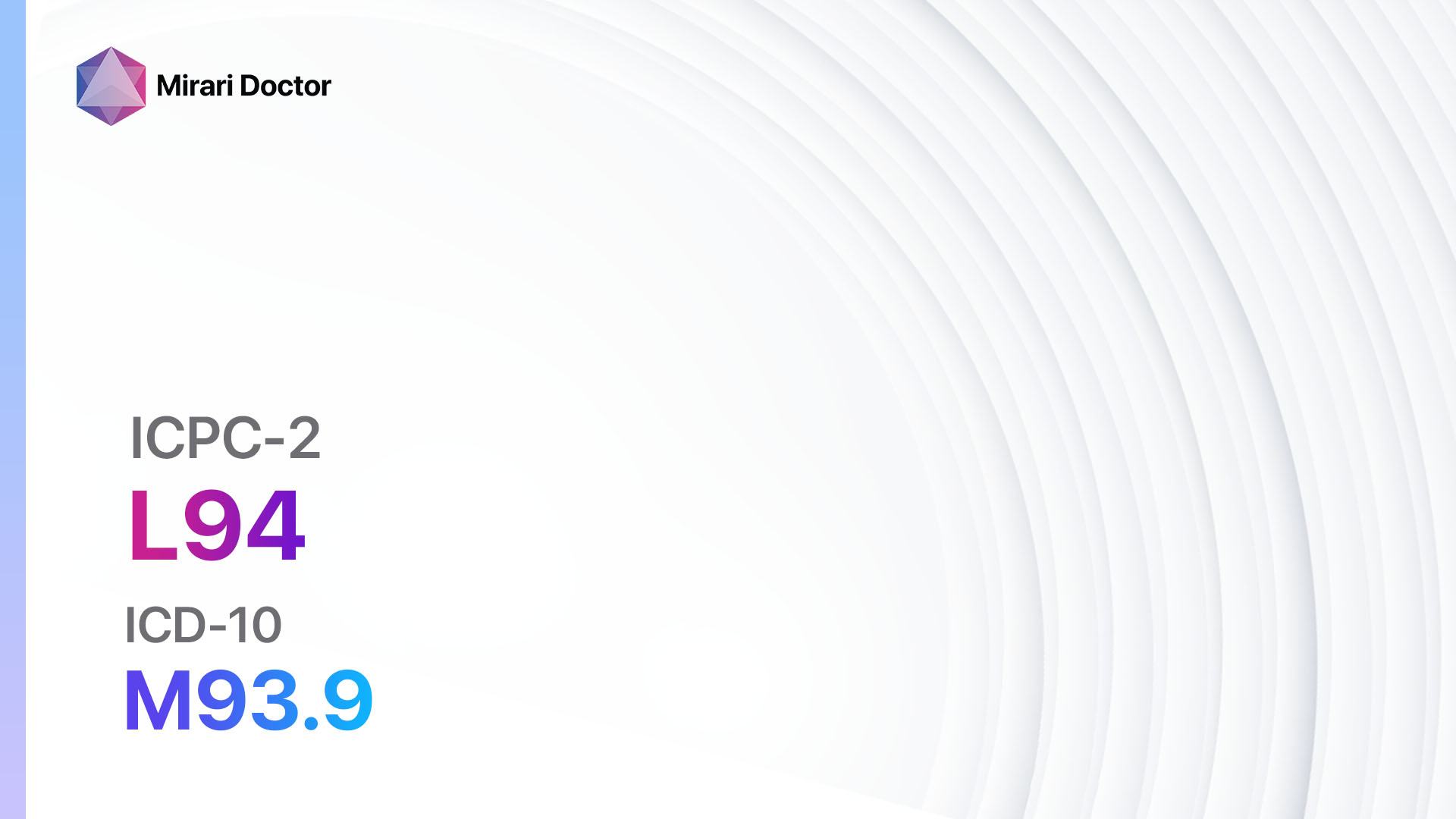
Introduction
Osteochondrosis is a condition that affects the growth of bones in children and adolescents. It occurs when the blood supply to a bone is disrupted, leading to the death of bone tissue. This can result in pain, stiffness, and limited range of motion.[1] The aim of this guide is to provide an overview of osteochondrosis, including its symptoms, causes, diagnostic steps, possible interventions, and lifestyle interventions.
Codes
Symptoms
- Joint pain: Patients may experience pain in the affected joint, which can be mild to severe.
- Stiffness: Stiffness in the affected joint, especially after periods of rest or inactivity.
- Limited range of motion: Difficulty moving the affected joint fully.
- Swelling: Swelling and tenderness around the affected joint.
- Muscle weakness: Weakness in the muscles surrounding the affected joint.
- Joint instability: The affected joint may feel unstable or give way.[4]
Causes
- Trauma: Injury to the affected joint can disrupt the blood supply and lead to osteochondrosis.
- Overuse: Repetitive stress or overuse of a joint can also contribute to the development of osteochondrosis.
- Genetics: Some individuals may have a genetic predisposition to developing osteochondrosis.
- Hormonal factors: Hormonal imbalances during growth spurts can increase the risk of osteochondrosis.[5]
Diagnostic Steps
Medical History
- Gather information about the patient’s symptoms, including the location and duration of joint pain, stiffness, and limited range of motion.
- Ask about any previous injuries or trauma to the affected joint.
- Inquire about any family history of osteochondrosis or other bone disorders.
- Assess the patient’s growth and development, as osteochondrosis commonly occurs during periods of rapid growth.[6]
Physical Examination
- Perform a thorough physical examination of the affected joint, assessing for swelling, tenderness, and range of motion.
- Look for any signs of joint instability or muscle weakness.
- Palpate the joint to identify any areas of tenderness or bony abnormalities.[7]
Laboratory Tests
- Blood tests: These may be done to rule out other conditions and assess for any underlying systemic diseases that may be contributing to osteochondrosis.
- Joint fluid analysis: If there is significant joint swelling, a sample of the joint fluid may be taken and analyzed for signs of inflammation or infection.[8]
Diagnostic Imaging
- X-rays: X-rays can help visualize the affected joint and identify any bony abnormalities or changes in bone density.
- MRI (Magnetic Resonance Imaging): MRI can provide detailed images of the affected joint, including the bone, cartilage, and surrounding soft tissues.
- CT scan (Computed Tomography): CT scans may be used to obtain more detailed images of the affected joint, particularly if there is suspicion of bony abnormalities.[9].
Other Tests
- Bone scan: A bone scan may be performed to assess the blood flow and metabolism in the affected bone.
- Arthroscopy: In some cases, an arthroscopy may be performed to directly visualize the joint and assess the extent of the damage.[10]
Follow-up and Patient Education
- Schedule regular follow-up appointments to monitor the progression of the condition and assess the effectiveness of interventions.
- Provide education to the patient and their family about the condition, including the importance of rest, physical therapy, and pain management strategies.
- Encourage the patient to maintain a healthy lifestyle, including regular exercise and a balanced diet, to support overall bone health.
Possible Interventions
Traditional Interventions
Medications:
Top 5 drugs for Osteochondrosis:
- Nonsteroidal anti-inflammatory drugs (NSAIDs) (e.g., Ibuprofen, Naproxen):
- Cost: Generic versions can be $3-$20/month.
- Contraindications: History of gastrointestinal bleeding, kidney disease.
- Side effects: Upset stomach, heartburn, dizziness.
- Severe side effects: Stomach ulcers, kidney damage.
- Drug interactions: Blood thinners, corticosteroids.
- Warning: Prolonged use can increase the risk of cardiovascular events.
- Analgesics (e.g., Acetaminophen):
- Cost: Generic versions can be $3-$10/month.
- Contraindications: Liver disease, alcoholism.
- Side effects: Rare at therapeutic doses.
- Severe side effects: Liver damage (with high doses or chronic use).
- Drug interactions: Alcohol, other medications containing acetaminophen.
- Warning: Avoid exceeding the recommended dose to prevent liver damage.
- Muscle relaxants (e.g., Cyclobenzaprine, Methocarbamol):
- Cost: Generic versions can be $10-$30/month.
- Contraindications: Glaucoma, urinary retention.
- Side effects: Drowsiness, dizziness, dry mouth.
- Severe side effects: Allergic reactions, liver toxicity.
- Drug interactions: Sedatives, alcohol.
- Warning: Avoid driving or operating heavy machinery while taking muscle relaxants.
- Corticosteroids (e.g., Prednisone, Methylprednisolone):
- Cost: Generic versions can be $10-$50/month.
- Contraindications: Active infections, uncontrolled diabetes.
- Side effects: Increased appetite, weight gain, mood changes.
- Severe side effects: Osteoporosis, adrenal suppression.
- Drug interactions: NSAIDs, anticoagulants.
- Warning: Prolonged use can lead to dependency and withdrawal symptoms.
- Physical therapy:
- Cost: Varies depending on insurance coverage and location.
- Contraindications: None.
- Side effects: Temporary increase in pain or discomfort during therapy.
- Severe side effects: Rare, but may include muscle strains or tears.
- Drug interactions: None.
- Warning: Compliance with the prescribed exercises and therapy sessions is crucial for optimal results.
Alternative Drugs:
- Glucosamine and chondroitin: These supplements may help improve joint health and reduce pain. Cost: $10-$30/month.
- Calcium and vitamin D: These supplements can support bone health and aid in the healing process. Cost: $5-$20/month.
- Topical analgesics: Creams or gels containing menthol or capsaicin can provide temporary pain relief. Cost: $5-$20 per tube.
Surgical Procedures:
- Osteotomy: In some cases, a surgical procedure called osteotomy may be performed to realign the bones and relieve pressure on the affected joint. Cost: $10,000 to $30,000.
- Arthroscopy: Arthroscopy may be used to remove loose fragments of bone or cartilage from the joint. Cost: $5,000 to $15,000.
Alternative Interventions
- Physical therapy: Physical therapy can help improve joint mobility, strengthen muscles, and reduce pain. Cost: $50-$150 per session.
- Acupuncture: Acupuncture may help reduce pain and improve blood flow to the affected joint. Cost: $60-$120 per session.
- Chiropractic care: Chiropractic adjustments can help improve joint alignment and reduce pain. Cost: $50-$200 per session.
- Massage therapy: Massage therapy can help relax muscles, improve circulation, and reduce pain. Cost: $60-$120 per session.
- Herbal supplements: Some herbal supplements, such as turmeric or ginger, may have anti-inflammatory properties and can be used to reduce pain. Cost: Varies depending on the specific supplement.
Lifestyle Interventions
- Rest and activity modification: Resting the affected joint and avoiding activities that worsen symptoms can help reduce pain and promote healing.
- Weight management: Maintaining a healthy weight can reduce stress on the joints and improve overall joint health.
- Low-impact exercise: Engaging in low-impact exercises, such as swimming or cycling, can help improve joint mobility and strengthen surrounding muscles.
- Heat and cold therapy: Applying heat or cold packs to the affected joint can help reduce pain and inflammation.
- Proper nutrition: Consuming a balanced diet rich in calcium, vitamin D, and other essential nutrients can support bone health and aid in the healing process.
It is important to note that the cost ranges provided are approximate and may vary depending on the location and availability of the interventions. It is recommended to consult with a healthcare professional for personalized treatment options and cost estimates.
Mirari Cold Plasma Alternative Intervention
Understanding Mirari Cold Plasma
- Safe and Non-Invasive Treatment: Mirari Cold Plasma is a safe and non-invasive treatment option for various skin conditions. It does not require incisions, minimizing the risk of scarring, bleeding, or tissue damage.
- Efficient Extraction of Foreign Bodies: Mirari Cold Plasma facilitates the removal of foreign bodies from the skin by degrading and dissociating organic matter, allowing easier access and extraction.
- Pain Reduction and Comfort: Mirari Cold Plasma has a local analgesic effect, providing pain relief during the treatment, making it more comfortable for the patient.
- Reduced Risk of Infection: Mirari Cold Plasma has antimicrobial properties, effectively killing bacteria and reducing the risk of infection.
- Accelerated Healing and Minimal Scarring: Mirari Cold Plasma stimulates wound healing and tissue regeneration, reducing healing time and minimizing the formation of scars.
Mirari Cold Plasma Prescription
Video instructions for using Mirari Cold Plasma Device – L94 Osteochondrosis (ICD-10:M93.9)
| Mild | Moderate | Severe |
| Mode setting: 2 (Wound Healing) Location: 0 (Localized) Morning: 15 minutes, Evening: 15 minutes |
Mode setting: 2 (Wound Healing) Location: 0 (Localized) Morning: 30 minutes, Lunch: 30 minutes, Evening: 30 minutes |
Mode setting: 2 (Wound Healing) Location: 0 (Localized) Morning: 30 minutes, Lunch: 30 minutes, Evening: 30 minutes |
| Mode setting: 9 (Arthritis) Location: 0 (Localized) Morning: 15 minutes, Evening: 15 minutes |
Mode setting: 9 (Arthritis) Location: 0 (Localized) Morning: 30 minutes, Lunch: 30 minutes, Evening: 30 minutes |
Mode setting: 9 (Arthritis) Location: 0 (Localized) Morning: 30 minutes, Lunch: 30 minutes, Evening: 30 minutes |
| Mode setting: 7 (Immunotherapy) Location: 1 (Sacrum) Morning: 15 minutes, Evening: 15 minutes |
Mode setting: 7 (Immunotherapy) Location: 1 (Sacrum) Morning: 30 minutes, Lunch: 30 minutes, Evening: 30 minutes |
Mode setting: 7 (Immunotherapy) Location: 1 (Sacrum) Morning: 30 minutes, Lunch: 30 minutes, Evening: 30 minutes |
| Total Morning: 45 minutes approx. $7.50 USD, Evening: 45 minutes approx. $7.50 USD |
Total Morning: 90 minutes approx. $15 USD, Lunch: 90 minutes approx. $15 USD, Evening: 90 minutes approx. $15 USD, |
Total Morning: 90 minutes approx. $15 USD, Lunch: 90 minutes approx. $15 USD, Evening: 90 minutes approx. $15 USD, |
| Usual treatment for 7-60 days approx. $105 USD – $900 USD | Usual treatment for 6-8 weeks approx. $1,890 USD – $2,520 USD |
Usual treatment for 3-6 months approx. $4,050 USD – $8,100 USD
|
 |
|
Use the Mirari Cold Plasma device to treat Osteochondrosis effectively.
WARNING: MIRARI COLD PLASMA IS DESIGNED FOR THE HUMAN BODY WITHOUT ANY ARTIFICIAL OR THIRD PARTY PRODUCTS. USE OF OTHER PRODUCTS IN COMBINATION WITH MIRARI COLD PLASMA MAY CAUSE UNPREDICTABLE EFFECTS, HARM OR INJURY. PLEASE CONSULT A MEDICAL PROFESSIONAL BEFORE COMBINING ANY OTHER PRODUCTS WITH USE OF MIRARI.
Step 1: Cleanse the Skin
- Start by cleaning the affected area of the skin with a gentle cleanser or mild soap and water. Gently pat the area dry with a clean towel.
Step 2: Prepare the Mirari Cold Plasma device
- Ensure that the Mirari Cold Plasma device is fully charged or has fresh batteries as per the manufacturer’s instructions. Make sure the device is clean and in good working condition.
- Switch on the Mirari device using the power button or by following the specific instructions provided with the device.
- Some Mirari devices may have adjustable settings for intensity or treatment duration. Follow the manufacturer’s instructions to select the appropriate settings based on your needs and the recommended guidelines.
Step 3: Apply the Device
- Place the Mirari device in direct contact with the affected area of the skin. Gently glide or hold the device over the skin surface, ensuring even coverage of the area experiencing.
- Slowly move the Mirari device in a circular motion or follow a specific pattern as indicated in the user manual. This helps ensure thorough treatment coverage.
Step 4: Monitor and Assess:
- Keep track of your progress and evaluate the effectiveness of the Mirari device in managing your Osteochondrosis. If you have any concerns or notice any adverse reactions, consult with your health care professional.
Note
This guide is for informational purposes only and should not replace the advice of a medical professional. Always consult with your healthcare provider or a qualified medical professional for personal advice, diagnosis, or treatment. Do not solely rely on the information presented here for decisions about your health. Use of this information is at your own risk. The authors of this guide, nor any associated entities or platforms, are not responsible for any potential adverse effects or outcomes based on the content.
Mirari Cold Plasma System Disclaimer
- Purpose: The Mirari Cold Plasma System is a Class 2 medical device designed for use by trained healthcare professionals. It is registered for use in Thailand and Vietnam. It is not intended for use outside of these locations.
- Informational Use: The content and information provided with the device are for educational and informational purposes only. They are not a substitute for professional medical advice or care.
- Variable Outcomes: While the device is approved for specific uses, individual outcomes can differ. We do not assert or guarantee specific medical outcomes.
- Consultation: Prior to utilizing the device or making decisions based on its content, it is essential to consult with a Certified Mirari Tele-Therapist and your medical healthcare provider regarding specific protocols.
- Liability: By using this device, users are acknowledging and accepting all potential risks. Neither the manufacturer nor the distributor will be held accountable for any adverse reactions, injuries, or damages stemming from its use.
- Geographical Availability: This device has received approval for designated purposes by the Thai and Vietnam FDA. As of now, outside of Thailand and Vietnam, the Mirari Cold Plasma System is not available for purchase or use.
References
- Vaquero-Picado A, Barco R, Antuña SA. Osteochondritis dissecans of the knee. EFORT Open Rev. 2016;1(11):391-399.
- World Health Organization. International Classification of Primary Care, Second edition (ICPC-2).
- World Health Organization. International Statistical Classification of Diseases and Related Health Problems 10th Revision (ICD-10).
- Kessler JI, Nikizad H, Shea KG, et al. The demographics and epidemiology of osteochondritis dissecans of the knee in children and adolescents. Am J Sports Med. 2014;42(2):320-326.
- Ytrehus B, Carlson CS, Ekman S. Etiology and pathogenesis of osteochondrosis. Vet Pathol. 2007;44(4):429-448.
- Cahill BR. Osteochondritis Dissecans of the Knee: Treatment of Juvenile and Adult Forms. J Am Acad Orthop Surg. 1995;3(4):237-247.
- Kocher MS, Tucker R, Ganley TJ, Flynn JM. Management of osteochondritis dissecans of the knee: current concepts review. Am J Sports Med. 2006;34(7):1181-1191.
- Edmonds EW, Polousky J. A review of knowledge in osteochondritis dissecans: 123 years of minimal evolution from König to the ROCK study group. Clin Orthop Relat Res. 2013;471(4):1118-1126.
- Quatman CE, Quatman-Yates CC, Schmitt LC, Paterno MV. The clinical utility and diagnostic performance of MRI for identification and classification of knee osteochondritis dissecans. J Bone Joint Surg Am. 2012;94(11):1036-1044.
- Chambers HG, Shea KG, Anderson AF, et al. American Academy of Orthopaedic Surgeons clinical practice guideline on: the diagnosis and treatment of osteochondritis dissecans. J Bone Joint Surg Am. 2012;94(14):1322-1324.
Related articles
Made in USA


